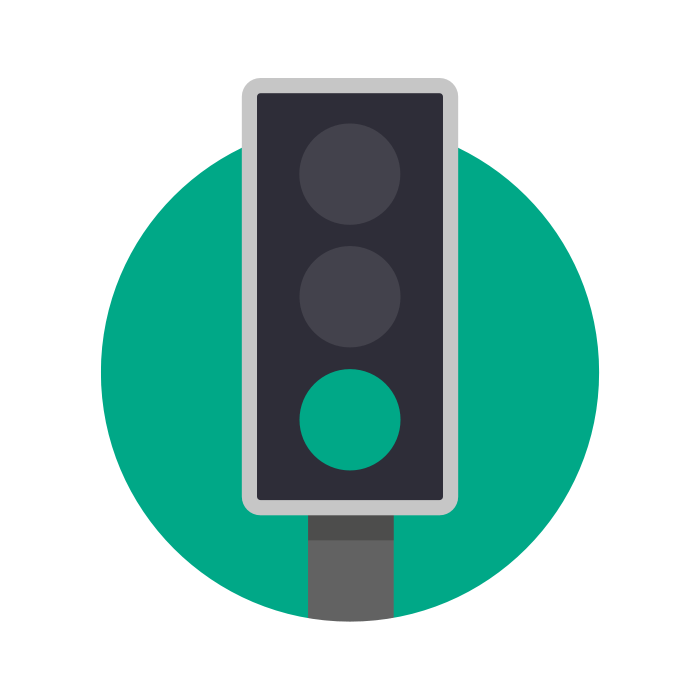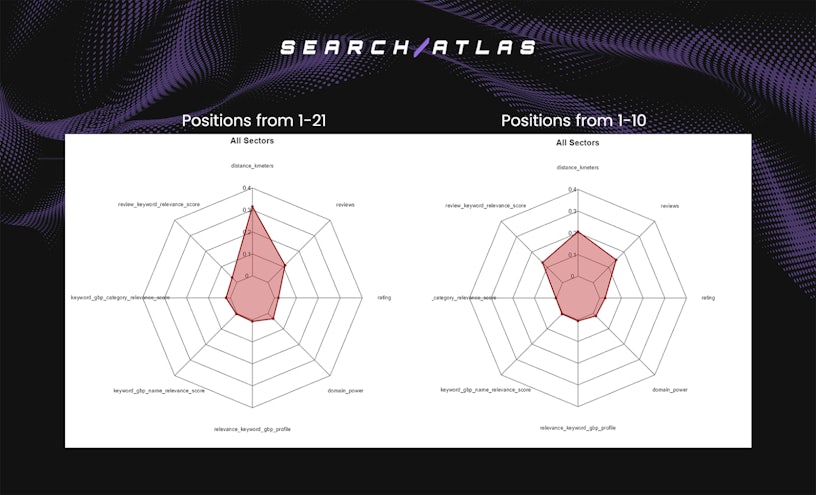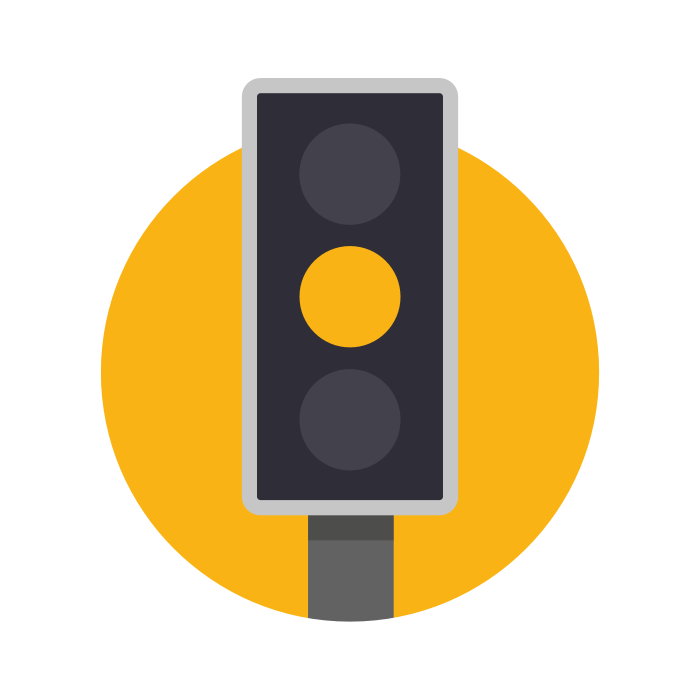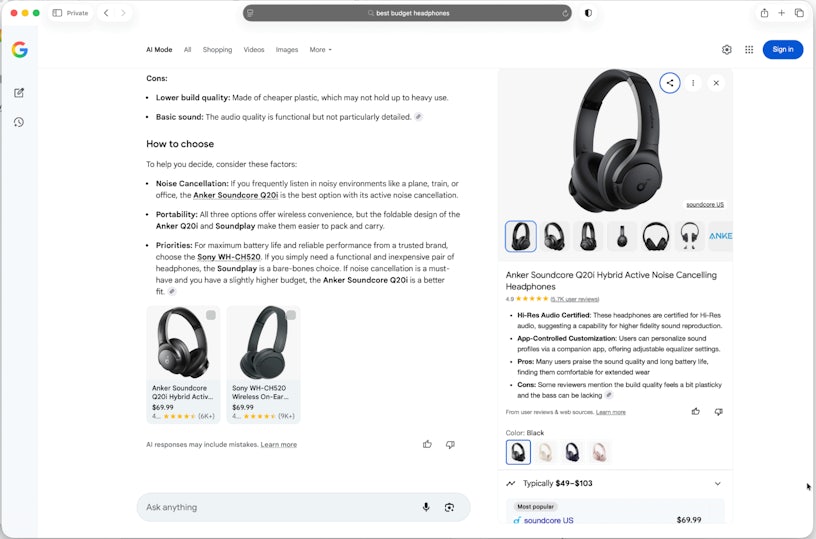This month, we bring you some exciting developments and updates from the world of search.
Recent studies reveal the shifting landscape of Local SEO. For Local SEO, Proximity (55.2%) is the top factor, followed by Review Count (19.2%) and Domain Power (5.9%). For the Top 10 results, the relevance of reviews becomes significantly more influential.
Meanwhile, the analysis of Google’s AI Mode suggests that standard Schema markup (Organisation, WebPage) remains baseline hygiene but provides no competitive advantage over niche types. Plus, Google’s testing of AI-generated product summaries highlights the importance of optimising product pages for AI for better conversion rates.
In a disruptive shift, Google’s removal of the “num=100” search parameter has impacted tracking tools like SISTRIX, leading to data changes for many sites. This move signals Google’s intent to limit data access, likely in response to the growing competition from AI search platforms.
We’ll explore these updates and more in detail in the article below.
Allow our traffic light system to guide you to the articles that need your attention, so watch out for Red light updates as they’re major changes that will need you to take action, whereas amber updates may make you think and are definitely worth knowing, but aren’t urgent. And finally, green light updates, which are great for your SEO and site knowledge, but are less significant than others
Keen to know more about any of these changes and what they mean for your SEO? Get in touch or visit our SEO agency page to find out how we can help.
- Google Business Profile ranking factors for Local SEO: Proximity, reviews, relevance
- Does schema help you surface more in Google’s AI Mode?
- Updates on AI Mode
- Google AI Mode product listings test AI-generated product summaries
- Google showing AI Mode In autocomplete search suggestions
- Google AI Mode now supports Hindi, Indonesian, Japanese, Korean, Portuguese & English
- 77% of sites lost keyword visibility after Google removed num=100: Data and how SISTRIX adjusted
Google Business Profile ranking factors for Local SEO: Proximity, reviews, relevance

A recent study from Search Atlas has uncovered the key drivers of Google Business Profile (GBP) ranking, analysing 3,269 businesses across food, health, law and beauty sectors.
The study revealed that the key factors that influence businesses’ ranks in local search results for the positions from 1 to 21 are:
- Proximity (55.2%): Distance to the grid centroid is the dominant factor, making location the strongest driver of visibility.
- Review Count (19.2%): The sheer volume of reviews strongly boosts rankings.
- Domain Power (5.9%): Website authority has a moderate but noticeable impact.
- Semantic Relevance in Reviews (5.3%): Content alignment in customer reviews helps improve rank.
- Other Factors (<5%): Category relevance, ratings, GBP completeness, and backlinks add smaller but still meaningful contributions.
For the top 10, the factors are:
- Proximity (36.2%)
- Review Count (26%)
- Review Keyword Relevance (22.8%)
Supporting Features: Ratings, domain power, and GBP completeness continue to provide secondary lift.

In addition, sector findings highlighted nuanced patterns: food businesses rely on reviews and profile completeness beyond location; healthcare requires trust signals from reviews and category alignment; legal visibility is overwhelmingly driven by proximity; beauty and personal care thrive on review volume, branding, and keyword-rich content.
The study recommends businesses treat proximity as fixed, but build competitive advantage through strategic review management, keyword-informed branding, and sector-specific optimisations.
As experts in local SEO, we can help your business stand out from the competition. Contact us for local SEO service and recommendations that just work for you.
Does schema help you surface more in Google’s AI Mode?

A recent analysis of 107,352 websites tested whether Schema markup directly influences citation visibility in Google’s AI Mode. While Schema adoption was widespread, the study found no evidence that niche types (e.g., FAQ, HowTo, Product) provide an advantage. Instead, the most common markups among cited pages were standard ones like Organisation (82%), WebPage/Article (76%), BreadcrumbList (59%), Person/Author (38%), and Product/Service (34%). These are typical across well-structured websites, suggesting Google is not prioritising special Schemas for AI Mode.
Semantic relationships in Schema (e.g., Organisation → name → Example Corp) are flattened into tokens, limiting any structured-data advantage. So for SEOs, this means Schema remains useful for traditional search, enhancing context and eligibility for rich results, but it should be treated as a baseline hygiene factor rather than a competitive differentiator in AI Mode.
Updates on AI Mode
Google AI Mode product listings test AI-generated product summaries

Google is testing AI-generated product summaries in the AI Mode results, after you click on a specific product.
When you search for a product-related query in AI Mode, then scroll to the products and click on one, it will open a panel on the right-hand side. In the test version of this panel, you will see Google start to dynamically generate an AI summary of that product, and then it will load.

Optimising product pages for AI summaries is crucial for SEO conversion. AI-generated summaries, which appear directly in product listings in AI Mode, serve as the user’s first impression. A good summary, or content that Google’s AI effectively highlights, can significantly boost engagement.
For AI to work effectively, source content must be clean, clearly structured, and include well-written features, pros/cons, and specifications. Conversely, messy or vague product pages can lead to poor AI summaries or cause the AI to select other products for summary content.
Therefore, your product page optimisation strategy needs to focus on being “AI-friendly” rather than just targeting ranking keywords. This includes providing clear specifications, user reviews, and a well-structured feature list, as well as potentially standardised attributes, to ensure your content is useful for AI summaries.
Google showing AI Mode In autocomplete search suggestions

AI Mode is now shown in the autocomplete search suggestions.

Additionally, it has been observed that Google is testing sending searchers to vertical search features within autocomplete search suggestions.

Google AI Mode now supports Hindi, Indonesian, Japanese, Korean, Portuguese & English

As AI Mode expanded to more countries, it is now supporting Hindi, Indonesian, Japanese, Korean, and Brazilian Portuguese.
“Building a truly global Search goes far beyond translation; it requires a nuanced understanding of local information. With the advanced multimodal and reasoning capabilities of our custom version of Gemini 2.5 in Search, we’ve made huge strides in language understanding, so our most advanced AI search capabilities are locally relevant and useful in each new language we support.”
77% of sites lost keyword visibility after Google removed num=100: Data and how SISTRIX adjusted

After the removal of the num=100 parameter on September 14, several effects on keyword visibility and data have been recorded. Most significantly, 87.7% of sites lost impressions in Google Search Console, according to a new analysis of 319 properties by SEO expert Tyler Gargula, Director of Technical SEO at LOCOMOTIVE Agency.
SISTRIX, a major SEO analytics platform, was immediately affected, with initial data drops and technical disruptions. The company’s founder, Johannes Beus, noted the difficulty, suggesting the timing of Google’s action, amid the rise of AI Overviews and increased political pressure, was likely intentional to complicate data collection.
SISTRIX founder Johannes Beus announced the company’s response to the change on September 30, 2025:
“At the moment, we therefore only record the first 10 results. Positions 11 to 100 are no longer available, which leads to a visible drop in the number of ranking keywords for many domains and to rankings being marked as lost.”
In response, SISTRIX discontinued its systematic desktop SERP data updates and adapted its crawling methodology. The platform prioritised keywords influencing its Visibility Index and client projects, adjusting crawling to retrieve 100 positions for these high-value keywords. For the remaining keywords, a decision framework based on volume and relevance was implemented to balance data quality against soaring costs.
In addition, Semrush publicly acknowledged the industry-wide disruption, confirming the change affected all rank tracking tools and implementing workarounds to minimise disruption.
The removal of #100 is reshaping how performance is measured, but Google hasn’t said whether the change is permanent or an accident. The removal of the parameter, coupled with the increasing role of AI search engines and chatbots (such as ChatGPT and Perplexity), forces providers to adapt and develop new tools, like AI Prompt Tracking, to measure visibility in an environment shifting away from the traditional “10 blue links” format.






